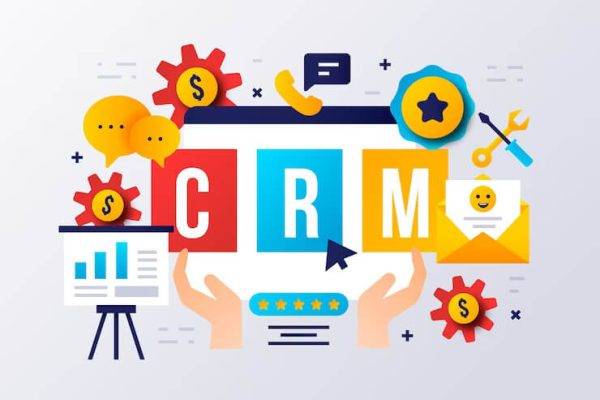If you’re a startup founder, you know that success often comes down to the smallest details. And when it comes to your business and marketing strategy, CRM software is at the top of the list.
In fact, a recent report from PwC found that companies with effective CRM systems see an average revenue lift of 5 percent—and they also have lower churn rates than their competitors who don’t use them at all!
But while there are many options out there (and plenty of them can get expensive), choosing just one may seem overwhelming. When you first start looking into them.
That’s why we’ve put together this helpful guide on how to choose the best simple CRM for a B2C startup.
1. Take a Close Look at Your Lead Pipeline.
The first thing you should do is take a close look at your current lead pipeline. This will help you understand how the CRM will fit into your existing process, what it can do for you, and how much money it could save.
It’s also important to know whether or not this product aligns with the goals of your business before making any purchases (or even signing up).
Once you have an idea about what each option is capable of accomplishing for both short-term and long-term growth, then make an informed decision based on those factors.
Tips to take a close look at your lead pipeline
- Define and understand your target audience: Clearly identifying your ideal customer will help you create a pipeline that efficiently converts leads into customers.
- Track lead sources: Analyze where your leads are coming from, this will help you identify the most effective marketing channels for your business.
- Qualify leads: Ensure that the leads in your pipeline are a good fit for your business. Qualifying leads will help you prioritize your efforts and focus on high-quality leads.
- Monitor lead progress: Keep track of the progress of each lead in your pipeline to see where they are in the sales process.
- Analyze conversion rates: Evaluate the percentage of leads that are converting into customers and identify areas that need improvement.
- Review your sales process: Examine your sales process to ensure it’s effective, efficient, and aligned with your customer needs.
- Use technology: Utilize a customer relationship management (CRM) system to manage and analyze your lead pipeline data.
2. Consider Your Sales Process and Goals.
The first step in choosing the right CRM for your business is to know your sales process. This will help you choose which features and functions of the software are most important to you, and how they can be used to support this process.
The next step is identifying key sales metrics that are relevant to your company’s goals. These should include:
- Number of new customers acquired per month
- Average ticket size (how much revenue do customers generate?)
- Conversion rate (percentage of leads who convert into paying customers)
Once you’ve identified these metrics, make sure that the CRM can meet them! If there aren’t enough leads coming in through email campaigns or social media posts then it may not be worth investing in a tool.
3. Don’t Overlook Your Company’s Future Growth.
The best CRM for a B2C startup should be able to handle your company’s future growth. In other words, it shouldn’t be static–it should grow with your business and its needs.
- Scalability: The ability of a system to handle increasing amounts of data while still being easy on the user is important when you’re starting out as a small business. If there are no plans for an expansion into larger offices or multiple locations within the same city (or even country), then make sure that whatever solution you choose will support this type of growth in both hardware and software components.
- Integration: Another way that some companies have found success is by integrating their ecommerce platform with their CRM software. So that customers can see all information related directly back at them through one interface instead of having to navigate multiple platforms just to get what they need out there right now.”
4. Narrow Down Your Options Based on Product Fit, Not Just Price.
It’s important to remember that you may not always be able to afford the most expensive product on the market. If your budget is tight and you’re looking for an affordable solution, there are some other things to consider before buying an application from one of these companies:
- Does the company behind this product have good customer support?
- Is it easy enough for new users (or even tech-savvy ones) to use?
- Is there any training or documentation available?
5. Make Sure the Application Can Integrate With Other Tools You’re Already Using.
The next step is to make sure that your application can integrate with other tools you’re already using. When it comes to CRM, this means integrating with any third-party apps or platforms that help streamline the sales process for your business.
The most popular integration options include:
- Email marketing automation (EMA) – A tool that allows users to send automated emails based on certain triggers or rules set by the user. EMA can be used by marketers who want their email campaigns sent at specific times and dates based on what they know about their customers’ behaviors, preferences and buying habits.
- Accounting software – An accounting system like QuickBooks Pro makes it easy for businesses to manage all aspects of their finances in one place. So, they don’t have multiple spreadsheets open when they need access to them quickly rather than having one centralized location where everything gets stored together under one roof (like Excel). The right accounting package can also make it easier for you as a small business owner because there won’t be any surprises when trying out new ideas. Instead, everything will already have been accounted for beforehand. So there won’t be any surprises later down the road either!
6. Keep Track of Your Sales Process.
The best way to do this is with a CRM, which allows you to organize all your leads, contacts and activities in one place. You can then use it as a reference when making decisions about what types of products or services work best with each customer (and how they interact with them).
It will also help you keep track of any upcoming events that might affect how much money you make in the future–like holidays or sales promotions. So, there’s no guesswork involved!
Tips to keep track of your sales process with a CRM
- Define and organize your sales stages: Create clear stages for your sales process, such as lead generation, qualification, proposal, closing, and post-sale follow-up.
- Input all customer data into the CRM: Store all customer data, including contact information, interaction history, and other relevant details, into your CRM system.
- Track and manage your leads: Keep track of leads, their source, and where they are in the sales process. Automate follow-up tasks and reminders to stay on top of the pipeline.
- Monitor performance with analytics and reports: Utilize the analytics and reporting features in your CRM to monitor your sales performance and identify areas for improvement.
- Assign tasks and follow-up activities: Assign tasks and follow-up activities to your sales team to ensure they are taking action on leads and deals in a timely manner.
7. Create a Consistent Marketing Plan.
A marketing plan is a document that contains the specific steps you’re going to take to reach your ultimate goal. For example, if you want to attract more customers, then your marketing plan will include how much time and effort it will take for each step in reaching this goal.
You should also consider long-term goals such as increasing revenue or improving customer retention rates. The best way for you to determine these goals is by creating an analysis of current metrics (such as conversion rate or average order value) across all channels and channels within your company that are relevant to those metrics.
8. Reduce Your Data Entry Time.
Automation, such as importing parts of the CRM into a spreadsheet and then importing that spreadsheet into your CRM. This can be done using Zapier or IFTTT.
Lead scoring and prioritization features, which help you manage leads based on their value (e.g., whether they’ve purchased something from you). You can use lead scoring to prioritize certain types of leads over others or give them special treatment.
So, they don’t get lost in a sea of other calls and emails when something goes wrong with an order after delivery has taken place.
Do You Need More Than One Solution?
If you’re a large enterprise, it’s likely that you will have multiple departments and many different products in your portfolio. In this case, choosing the best simple CRM for a B2C startup may not be possible.
However, if your business is small and doesn’t need an enterprise solution (or even if it does), then one simple CRM might be enough.
How Will You Actually Use the CRM?
When you’re buying a CRM, you need to think about how it will be used and accessed.
The first question is: will you use this on your own laptop or phone? If so, then that’s great! But if not, then what technology do you have access to? If none at all (and this is likely), then investing in a dedicated CRM could save money in the long run by reducing support costs later on down the line. When things go wrong with your system.
Secondly: Do we need an iPad app as well as desktop software? This depends largely on which kinds of customers we’re targeting with our product offering and whether or not they have any sort of mobile device available for them (which could mean anything from phones through tablets).
How Easy is It to Use?
The next thing you should consider is how easy it is to use. If your CRM hasn’t been designed with the needs of startups in mind. It won’t be much use to you at all. The interface should be intuitive and easy-to-navigate.
So that even if you don’t know what some of the features do (and most people will), they can still find their way around without any trouble.
Tips to choose easy to use CRM:
- User-friendly interface: Choose a CRM with an intuitive and simple interface that is easy to navigate.
- Customization options: Look for a CRM that can be tailored to your specific business needs and processes.
- Integration capabilities: Choose a CRM that integrates with other tools you use, such as email, marketing automation, and customer support platforms.
- Mobile access: Make sure the CRM offers mobile apps or a mobile-responsive website, so you can access customer information from anywhere.
- Customer support: Ensure the CRM provider offers good customer support, including online resources, documentation, and accessible customer service.
- Ease of data import: Look for a CRM that allows you to import data easily, so you can quickly get started.
- Affordable pricing: Choose a CRM that fits within your budget, but also provides the features you need to effectively manage your customer relationships.
Is It Secure?
Security is an important factor to consider when selecting your CRM to manage B2C sales. In this day and age, where data breaches are commonplace, it’s essential that you choose a system that has been tested for security by third-party auditors.
Ensuring the security of this information is crucial for maintaining customer trust, compliance with data privacy regulations, and preventing financial and reputational harm to the organization.
Here are some tips to help you choose a secure CRM:
- Verify Data Encryption: Ensure that the CRM system uses encryption to protect data both in transit and at rest.
- Check for Compliance with Industry Standards: Look for CRMs that comply with industry-standard security certifications such as SOC 2, PCI DSS, and ISO 27001.
- Research the Vendor’s Security Record: Research the CRM vendor’s track record for data security, including any known data breaches or security incidents.
- Consider Multi-Factor Authentication: Choose a CRM that supports multi-factor authentication to provide an additional layer of security.
- Ask about Data Backup and Recovery: Make sure the CRM has a robust backup and recovery plan in place in case of data loss or corruption.
- Evaluate Access Control: Check the CRM’s access control mechanisms to ensure that only authorized personnel can access sensitive data.
- Ensure Regular Software Updates: Choose a CRM that regularly releases software updates to address security vulnerabilities.
- Conduct User Training: Provide proper training to users to ensure they are aware of security best practices and are following them.
Conclusion
When it comes to choosing a CRM, there are many options out there. But when it comes down to it, the most important thing is making sure that your sales process is as efficient as possible.
After all, you want customers who are happy and loyal because they’ll keep buying from you again in the future! We’re expecting that you got the overall idea of how to choose the best simple CRM for a B2C startup.
If you’re looking for a user-friendly and simple CRM for B2C startup then HubSpot can be a great option for you. Sign Up now and enjoy Free Trial.





